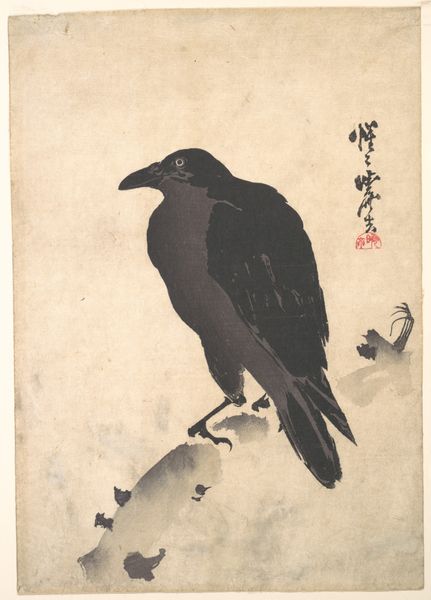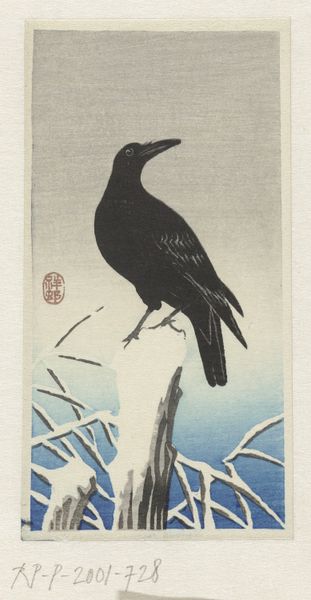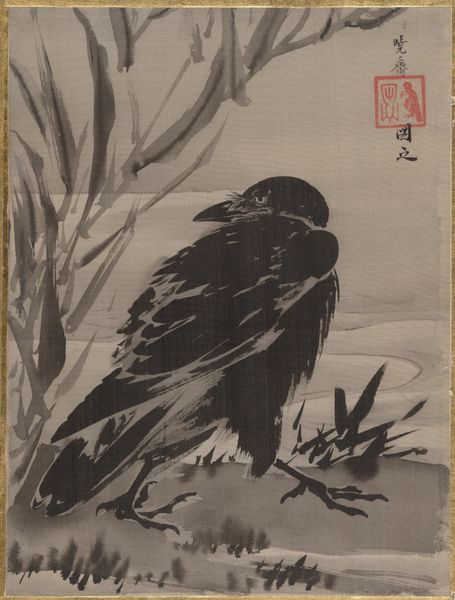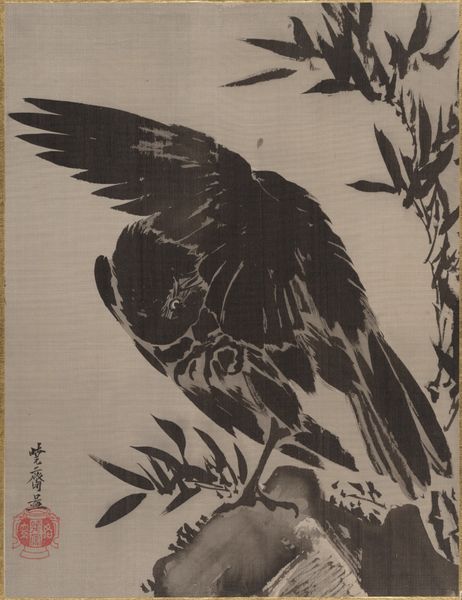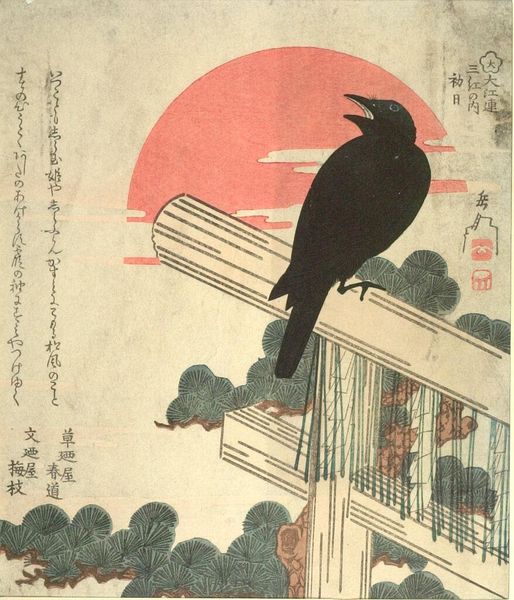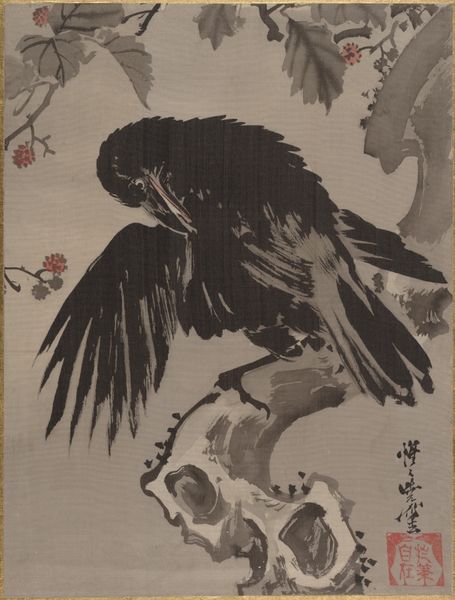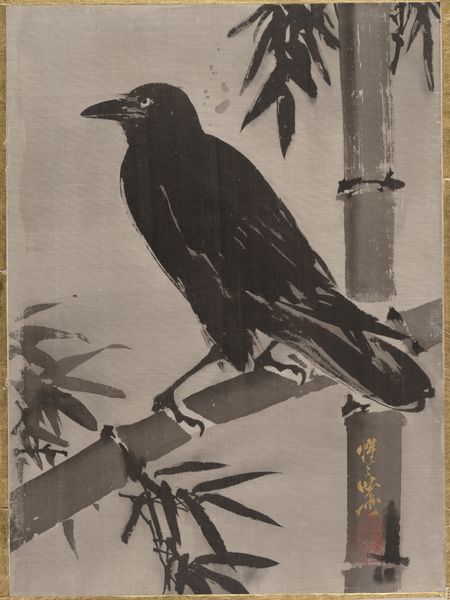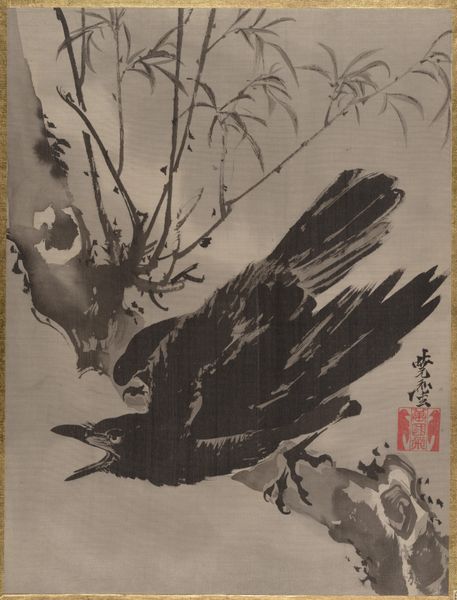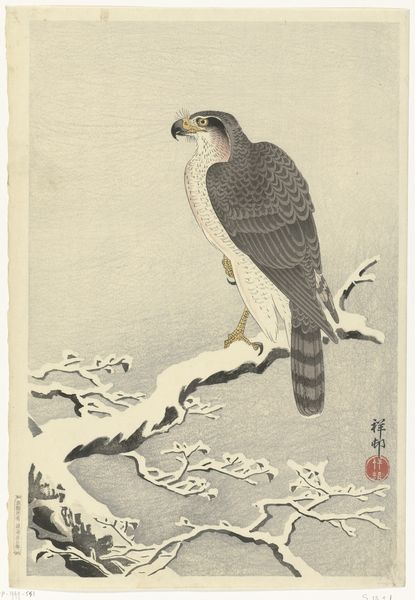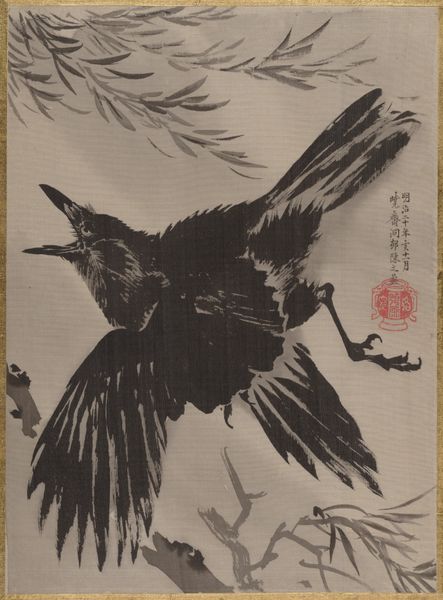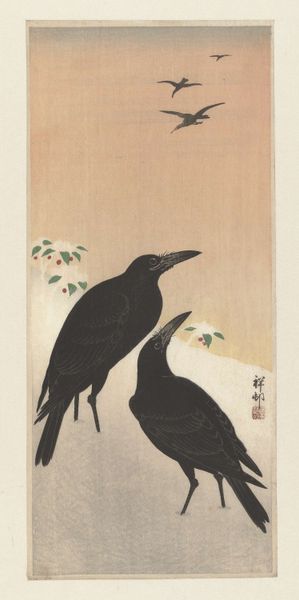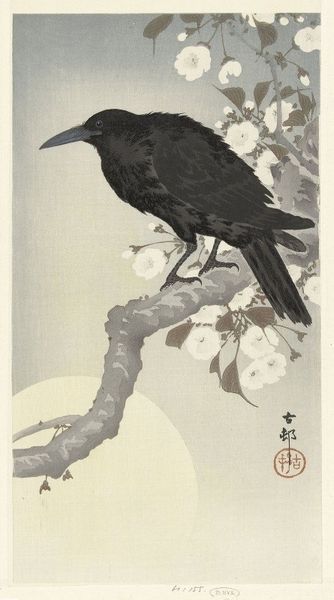
Dimensions: height 229 mm, width 229 mm
Copyright: Rijks Museum: Open Domain
Curator: Looking at this woodblock print, dating from around 1868 to 1872 and created by Kawanabe Kyosai, currently held at the Rijksmuseum, the mood is immediately stark and contemplative, isn't it? Editor: Absolutely. The sharp contrast between the black crow and the snowy white branches creates an impactful visual tension. The use of the minimal palette to such dramatic effect really speaks to its elegance. Curator: Crows, especially in Japanese art and folklore, can be powerful symbols. They can represent intelligence, but also trickery or even serve as messengers from the spirit world. This crow, perched so prominently amidst the wintery landscape, seems imbued with a particular significance, doesn’t it? Editor: I agree; it feels very deliberate. From a purely formal perspective, observe how Kyosai balances the composition. The circular impression of the sky mimics and softens the angularity of the pine needles, the crow sitting in stark contrast between the two is a lesson in asymmetry. The flat planes and deliberate outlining give it a sense of immediacy. Curator: The placement within that void and use of white snow creates a sense of purity and quiet observation—almost a meditation on winter's stark beauty but could also symbolize resilience. After all, the crow endures even in the harshest of landscapes. I’m drawn to what this endurances may imply—perhaps the crow is not just surviving but thriving? Editor: I hadn't thought of it in that way. I appreciate that interpretation because in this ukiyo-e style, the reduction of color demands an exceptional clarity of form to evoke that powerful symbolic resonance that you touched upon earlier. The execution makes this print remarkable, transforming a seemingly simple scene into something so complex in both construction and context. Curator: Yes, something as simple as snow falling—and the resilience the landscape inspires—transcends just form. We may leave understanding the world through that lens slightly differently. Editor: Indeed, there's an intensity there. It forces one to reconsider simple binary aesthetics like black-and-white depictions in art, creating a third layer of the viewers reflection of reality and artifice.
Comments
No comments
Be the first to comment and join the conversation on the ultimate creative platform.
